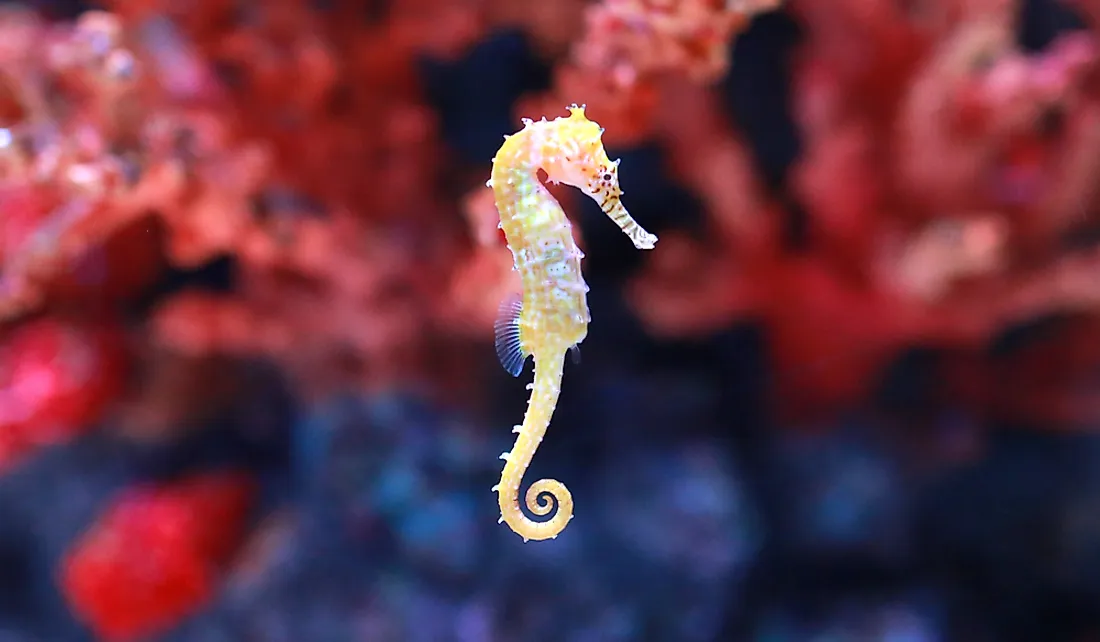What Do Seahorses Eat?

Seahorses are small marine fishes belonging to the genus Hippocampus. Seahorses can be found in shallow temperate and tropical salt waters. The numerous seahorse species range in size from 0.6 inches to 14 inches. They have bent necks, distinctive trunks, tails, and long-snouted heads. Even though they are bony fishes, seahorses do not have scales. Their bony plates are covered by a thin skin. The seahorses swim upright, and they propel themselves using their dorsal fins. They use their pectoral fins for maneuvering. Seahorses don’t have caudal fins, and unlike other fishes, they have a well-defined and flexible neck. These marine fishes don’t have teeth; therefore they tend to suck in their prey and swallow them. Seahorses feed on the tiny crustaceans, like copepods and shrimps, which crawl at the bottom of the ocean or the ones floating in the water. Most seahorses love mysid shrimps, but others consume different types of invertebrates, planktons, and larval fishes.
How Often Do The Seahorses Eat?
Since they are slow swimmers, eating can be very challenging. Seahorses don’t have stomachs; therefore they need to eat regularly since their food goes straight to their digestive systems. Young seahorses consume about 3,000 pieces of food daily. Adult seahorses are always grazing and can eat up to 50 times every day.
How Do The Seahorses Get Their Food?
Seahorses are not good swimmers; therefore, they tend to anchor themselves to corals or seaweeds using the prehensile tails. The seahorses have a unique neck that is adapted to catching all the evasive preys. They can move silently and slowly up to where their prey is without alerting them. Once they are in close range, they can rotate their heads and bring their snouts close to the prey right before slurping them.
They have three feeding phases (recovery, expansive, and preparatory). During the preparatory stage, they slowly approach their prey, and once they are close to them, they flex their heads ventrally. During the expansive phase, they capture their prey by expanding their buccal cavity, lifting their heads and sucking them into their mouth. After they have swallowed the food, the hyoid apparatus, head, and jaw return to their original position.
The presence of vegetative cover influences their eating behaviors. When they are in areas with small vegetative covers, the seahorses tend to sit and wait for the prey. In places with extensive vegetation, they inspect their surroundings and even feed while swimming.
Feeding Seahorses in Captivity
These marine fishes are quite famous in the aquarium business, but feeding them while they are in an aquarium can be challenging since they prefer live food. Therefore, you must train them by mixing live food with frozen food. Some of the frozen food which they enjoy includes planktons, krill, and grass shrimps.











